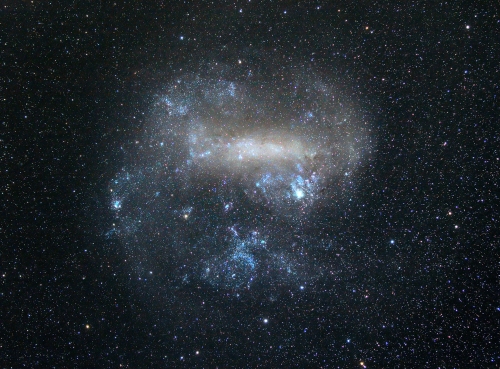Tomorrow (Friday the 27th), I am jumping on a plane to join a cruise to give astronomy lectures. The cruise boards in Buenos Aires on Saturday (28th), leaving for Montevideo on Sunday the 1st, and then around Cape Horn and Tierra del Fuego to Santiago in Chile some two weeks later (arriving in Santiago on the 14th of March). This is the cruise schedule.

The cruise I will be on sails from Buenos Aires to Santiago via Tierra de Fuego and the Straits of Magellan
One of the things I am most looking forward to is passing through the Straits of Magellan, which are of course named after the Portuguese explorer Ferdinand Magellan, the first European to sail around the southern tip of South America. The expedition that he led was the first to circumnavigate the Earth, but Magellan himself sadly didn’t live to see the end of the trip as he was killed in a battle in the Philippines.
At about the time that we are passing through the Straits of Magellan, I plan to give a lecture about the Magellanic Clouds, which are neighbour galaxies to our Milky Way, but only visible from the Southern Hemisphere and not from Europe or North America. I also hope to be able to conduct star parties on clear nights where I will point out where the Magellanic Clouds can be seen, as they are visible this time of the year.

The cartoon shows what is known as our “local group”, our Milky Way galaxy, the Andromeda galaxy, and the various dwarf galaxies orbiting each of them. The Large and Small Magellanic Clouds (LMC and SMC) are satellite dwarf galaxies of our Milky Way.
There are two Magellanic Clouds, the Large Magellanic Cloud and the Small Magellanic Cloud. They both lie about 170,000 light years away from us, and are in fact dwarf galaxies which are in orbit about our much larger Milky Way galaxy. I have only seen them once, when I was observing at the Parkes Radio Observatory in New South Wales (Australia) back in 1990, but if you get into a dark enough place in the Southern Hemisphere and use your peripheral (averted) vision, they can be seen with the naked eye.
To professional astronomers of today, such as myself, the Magellanic Clouds are famous for two things in particular. In 1908 they were investigated by Henrietta Leavitt, who found variable stars in them and was able to deduce the period-luminosity relationship for Cepheid variables, which is crucial in our ability to determine the distances to nearby galaxies. In 1923, it was discovering a Cepheid variable in Messier 31 (the Andromeda nebula) that enabled Edwin Hubble to calculate that it was far too far away to be in our Milky Way galaxy and must lie beyond it, showing for the first time that our Galaxy was not the entire Universe.
The other thing for which the Magellanic Clouds are famous in the 20th Century is that in 1987 a supernova exploded in the Large Magellanic Cloud. Known as SN1987A, it was (and still is) the nearest star to explode since Kepler’s supernova of 1604. It was clearly visible to the naked-eye for many nights, and was the biggest astronomy event of that year. Studying SN1987A, because it is so relatively close, has enabled us to learn a great deal about the details of stellar explosions, confirming our theories and helping us refine the parts of our theories which weren’t quite correct.

The before (right hand picture) and after (left hand) of the Large Magellanic Cloud showing the supernova which exploded there – supernova 1987A. It was clearly visible to the naked eye for many nights due to its incredible brightness, and the first naked-eye supernova since 1604.
Internet access allowing, I hope to be able to do a few blogs during the cruise of some of the sights we shall be seeing. I will also be scheduling some posts before I leave, so that this blog does not go completely idle during my absence.



